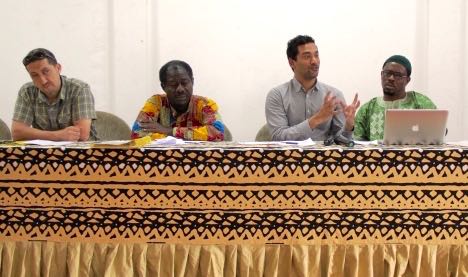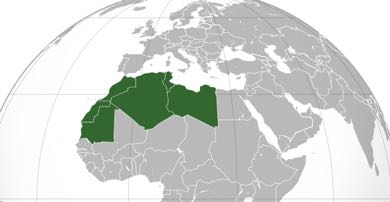IARJ in Africa: Connecting journalists and scholars

Journalists and scholars tackled the challenges of reporting on religious diversity in the vast and complex continent of Africa at the 2016 conference sponsored by the International Association of Religion Journalists (IARJ). The conference was held, in collaboration with the African Association for the Study of Religions (AASR), at the Institute of African Studies at the University of Ghana in the capital Accra this summer.
Participants came from our host country Ghana and from many other African nations, including Nigeria, Togo, South Africa and Algeria. IARJ leaders also came from Europe and both North and South America. The enriching diversity of ethnic, religious and cultural backgrounds produced several days of spirited discussion in Accra.

One important topic discussed at length is the challenge of covering religion in the North African region often referred to as the Arab Maghreb, the region including Mauritania, Morocco, Algeria, Tunisa and Libya. To the outside world, most media give the impression that Islam is the only religion present in this vast region. There are many reasons for this: Of course, Muslims comprise the majority population; Islam has been officially adopted by governments in the region; and members of religious minorities are not as visibly active in the public sphere.
Conference participants discussed why this situation evolved over the past two centuries and how it has been shaped especially in recent years. The challenge to serious journalists is to understand the more complex religious diversity even in this region of African. This topic then connected with other presentations and conversations at the conference on the importance of reporting about the wide range of religious minorities across the continent.
Religious diversity runs deeper than the major world religions, including Judaism, Christianity, Islam and traditional African religious groups. Within these major religious groups, there are distinct and important minorities, many of whom find it difficult to have a visible voice in the world.
This is more than a question of having journalists speak with scholars and experts who can help them learn more about religious minorities. Participants at the conference talked about a number of outside forces with which they must contend in pursuing such stories. In some cases, government officials think that media coverage of religious minorities will only lead to division, incitement and perhaps even violence. Such factors may make it difficult for serious journalists to dig deeply into stories on religious diversity.
Drawing on Scholars’ Expertise
The IARJ Ghana conference also included scholars who specialize in studying in African religions. Among the high points in Accra were talks by Prof. Abel Ugba , Prof. Afe Adogame and Prof. Kwabena Asamoah-Gyadu, three scholars from AASR, who presented summaries of their research and invited discussion with the journalists.
The central question raised in these conversations was: Can journalists take time to read what scholars are publishing on these issues?
One journalist frankly answered the question: “No, and the main reason is that academic writing is too complicated and too long.” Conference participants discussed this challenge at length. Both scholars and journalists shared about the many demands of their professions—and also the need to find new ways to connect.
One proposed solution is encouraging scholars to produce a journalist-friendly summary of their research so media professionals can quickly get a sense of the new studies that are being published. Facing so many daily demands and deadlines, journalists need to quickly learn the essential news that scholars are bringing to the world.
Interfaith Dialogue
Another major topic at the conference is the proper role for journalists in covering interfaith dialogue. A key question is: Should journalists promote such dialogue?
Whether such dialogues are beneficial, the role of journalists is to fairly and accurately cover what is actually happening. A truthful and balanced approach to the news will cover religious tensions and conflicts as well as examples of co-existence and cooperation between religions. It is not the role of the journalist to actively promote interfaith programs. Journalists are the neutral observers who cover the entire context, both division and cooperation.
Many questions raised by the participating journalists also are shared by reporters and editors around the world, when it comes to covering religion:
- How can we find more accurate sources?
- How can we ensure balance in our reporting?
- How do we deal with news organizations that prefer only to cover conflict, and tell us to ignore stories about cooperation? And, how do we deal with various government restrictions?
- Are we focusing too much on extremists and missing important stories about the majority of the religious population?
By the end of the conference, which was held in late July, participants returned home with many recommendations and fresh ideas. Here are just a few:
- We all encourage journalists to find opportunities for specialized training in covering religion, which is a complex and diverse subject. And we urge …
- Increased contact with religious leaders who can provide overall context and can help journalists use a broader network of contacts
- Increase partnerships with other journalists, including continent-wide and worldwide
- Encourage our editors, directors and media owners to pursue good stories on religion.
Care to learn more?
Please follow the IARJ on Twitter and Facebook. Also, encourage friends to follow our Twitter feed, which provides fascinating news from around the world in several languages. The IARJ Twitter feed will give you a far more diverse window into the world’s religious and cultural diversity.
If you are a journalist covering religion, consider becoming a member of the IARJ.
